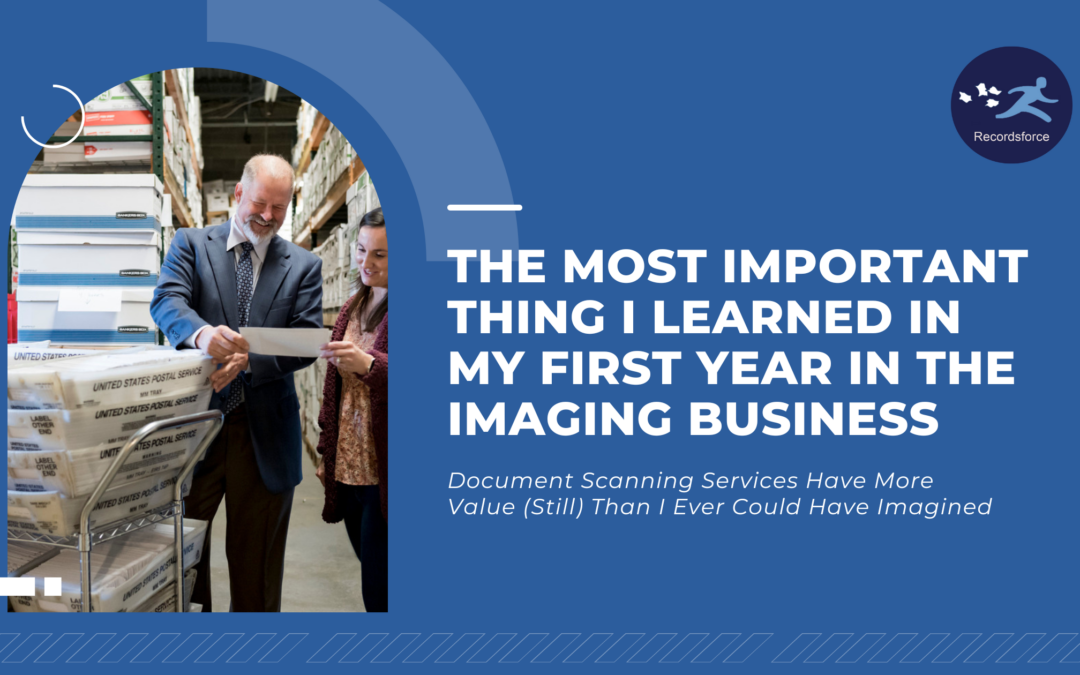While paper has been successfully phased out for some businesses, there are more companies than I ever imagined still running on it. It’s not just your typical small businesses either. Some of these are large operations running in 75 countries and doing it entirely on paper. No matter how much technology we have access to, there are still companies running entirely off paper that is stored in boxes, cabinets, and shelves and then arranged into closets, cabinets, vaults, attics, and basements.
Why do they have all this paper? The data and information that is stored on it is either used to run their business (i.e. invoices, applications, deal files, patient charts, etc.) or has to be kept to protect their business for years to come (i.e. contracts, batch records, regulatory filings, etc.). While the technology to operate paperlessly is widely available, it takes a tremendous amount of time and resources to transition your business from thousands of boxes of paper into hundreds of gigabytes worth of images. Companies big and small will often try to tackle the issue of going paperless internally, and do it in one of two ways.
The first and most common way is that they’ll assemble one or two project leads (typically the people whose idea it was to go paperless) to run a team of lower level employees who will get some scanning done “in their free time”. This method has inherent flaws. From top to bottom, this team has no experience managing a project like this while also having a variety of other responsibilities within the organization (their job), which doesn’t allow for much free time. As a result, some documents are scanned but the project doesn’t get finished before momentum fizzles and the project fades away. The company continues operating on paper until the next potential project lead presents the idea of going paperless and takes on the challenge.
The second way companies try to go paperless on their own is with temporary staff. The project leads bring on a team of temporary staff that will be dedicated to a scanner until the project gets done. The problem here, however, is that those project leads still don’t have experience completing a project like this, or even managing a team on how to complete it. Miscalculations are made on the initial estimates, errors are made throughout the project due to a lack of process, and while the project may get completed, it takes three times as long with costs that were double what was expected.
This is where the value of document scanning services lie. The teams in our industry are dedicated every day to completing document scanning projects. Regardless of the type of documents (medical records, financial records, large format drawings, or state and municipal government files, etc.) our people have seen it all and have processes developed to handle every variation. Errors happen, but our teams know how to correct them immediately versus trying to figure it out for the first time. From estimating the project size properly, to actually completing the work in a timely manner, using a professional to handle a document scanning project is crucial if you want to get it done correctly, in a timely manner and not cost yourself substantially more in the long run.
Most companies also fail to realize that document scanning is only the first step. Beyond the digitization of paper, a service bureau will also be knowledgeable about how to properly and securely store digital images, best practices for maintaining a paperless business going forward, and how to successfully automate the processes that made them accumulate so much paper in the first place.

